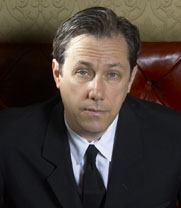I’ve just finished the second keynote address I’ve ever written, and I think it’s the most difficult genre of writing I’ve run across. It’s easy to show up for a panel and present your personal point of view, needle some people, be a provocateur. It’s easy to do some research and write a purely objective encyclopedia article or lightly-spun program note. But a keynote address can be neither personal nor merely factual. It has to anticipate and express the collective concerns without taking sides, frame any possible argument among your audience members, and you’re not always quite sure who your audience is. The issues must be sharply drawn, yet without divisiveness. A world must be circumscribed and a stage set, with no particular outcome implied or favored. It is the prologue to a play that hasn’t been written. Magnanimity and incisiveness must flow in graceful alternation. And I’ve come to have a larger measure of respect for the people who do it on a regular basis.


 I was almost remiss in letting an important milestone go by: today composer Mikel Rouse turns 50. In America you’re a “young composer” until you’re 50, and it’s disconcerting to think that Mikel, only 14 months younger than me but ten years younger-looking, has crossed the line. He’s the only composer younger than myself whose music has influenced my own long-term. He piles up layer after layer after layer in his recordings, all at different tempos and rhythms, and yet his music retains a remarkable clarity, and the ear can zero in wherever it chooses. My music sounds nothing like his; his is extremely pop-oriented and exquisitely produced in the studio, mine is mostly regular acoustic concert music with almost no pop influence. But when composing I stop and listen to his albums to remind myself to never stop reaching for that amazing clarity. I drink to his health and incredible music.
I was almost remiss in letting an important milestone go by: today composer Mikel Rouse turns 50. In America you’re a “young composer” until you’re 50, and it’s disconcerting to think that Mikel, only 14 months younger than me but ten years younger-looking, has crossed the line. He’s the only composer younger than myself whose music has influenced my own long-term. He piles up layer after layer after layer in his recordings, all at different tempos and rhythms, and yet his music retains a remarkable clarity, and the ear can zero in wherever it chooses. My music sounds nothing like his; his is extremely pop-oriented and exquisitely produced in the studio, mine is mostly regular acoustic concert music with almost no pop influence. But when composing I stop and listen to his albums to remind myself to never stop reaching for that amazing clarity. I drink to his health and incredible music.